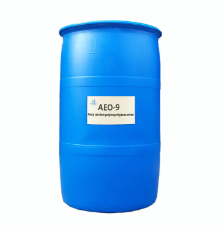Effective means of sterilization and antibacterial treatment - a detailed discussion of daily chemical raw materials in hand sanitizers Non-ionic surfactants
2025-03-07
In the face of a complex and severe epidemic, it is particularly important to do a good job of personal safety and health protection. Medical staff said that improving one's own immunity, washing hands frequently, and wearing masks are effective means to avoid infection. Hand sanitizer contains surfactants, and a spray can achieve disinfection, sterilization and cleaning effects.
In addition to surfactants, antibacterial (inhibitory) hand sanitizers on the market also add disinfectants to the formula, which can reduce or inhibit the growth of microorganisms. At present, there are about dozens of disinfectants that can be used in antibacterial (inhibitory) hand sanitizers, but the safety of some disinfectants needs further research, which may cause adverse reactions such as dermatitis, allergic reactions, skin absorption and toxic effects, and disinfectant resistance.
Experts pointed out that disinfection and sterilization are two concepts. Disinfection refers to the lethal effect on the reproductive bodies of pathogenic microorganisms, but it cannot kill all microorganisms such as spores. Therefore, disinfection is not thorough and cannot replace sterilization; sterilization is an annihilation war, killing pathogens without leaving any, and disinfection is firepower suppression, reducing the number of pathogens, reducing their vitality and transmissibility.
Brian Sansoni of the American Cleaning Association believes that washing hands with soap and water is the best disinfection method. Hand sanitizer only plays a supplementary role and cannot replace traditional soap. Dr. Glatt reminded that no matter what hand washing method is used, hands should be fully soaked first and scrubbed carefully for 20 to 30 seconds. When using hand sanitizer, keep rubbing the front and back of your hands, fingers, nails, etc. until the hand sanitizer is completely dry before rinsing.

Basic ingredients: surfactants
Compared with the chemical ingredients of disinfection and sterilization, the main raw material in hand sanitizer is actually surfactants. Its basic function is to remove grease and dirt on the hands. The normal usage is 15% to 25%. Recently, with the surge in demand for various disinfectants and sterilizing hand sanitizers, surfactants are also in short supply.
Strong substitute: Medicated soap is popular again
Soap is an indispensable washing and care product in daily life. It uses sodium fatty acid and other surfactants as the main raw materials, adds quality improvers and appearance improvers, and is processed and formed. It is still used by many families.
Bactericidal ingredient: parachloro-meta-xylenol
General hand sanitizer formulas have decontamination, care, antibacterial, sensory adjustment and natural ingredients, of which the first three have chemical ingredients.
Decontamination ingredients are mainly anionic surfactants, as well as a small amount of nonionic and zwitterionic surfactants, which are designed to provide decontamination and rich foam. Commonly used anionic surfactants include soap, sodium lauryl sulfate, Q-olefin sulfonate, fatty alcohol polyoxyethylene ether sulfate, Q-sulfonic fatty acid esters, lauroyl sarcosinate and monooleamide sulfosuccinate disodium. Nonionic surfactants are rarely used in hand sanitizers. A small amount of addition can enhance the decontamination effect and improve the stability of the foam, such as coconut oil diethanolamide, in which the addition of alkyl glycosides can reduce the irritation of surfactants to the skin. A small amount of zwitterions are added to facilitate foaming and the durability of the foam, such as betaine and amine oxide.
Due to the degreasing effect of surfactants, the skin feels dry after washing hands, so some fat-enriching agents and emollients should be added to replenish skin oil to prevent dry and rough skin, such as various natural and synthetic lanolin, glycerin, propylene glycol, sorbitol, lactate and sodium pyrrolidone carboxylate.
Hands are always in contact with the outside world, and it is inevitable that they will be contaminated with various bacteria and even fungi, so the bactericidal components must have a broad spectrum.

